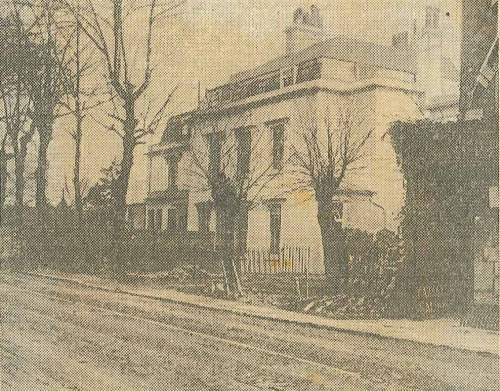Mayflower Theatre has had many names, The Gaumont, The Empire, but before it was even built, Commercial Road had another illustriously named building – Hamilton Place.
Why was it called Hamilton Place? Legend has it that Lord Nelson visited his great love Lady Hamilton here and the house was named for her. But perhaps more likely is simply that Hamilton was a popular name with links to aristocracy – the County of Southampton (now known as Hampshire)’s Hamilton Baronetcy for example. Just like naming a road after the Queen or King, naming a house after a powerful figure, whether that be the local Baronet, a wealthy merchant or one of the Founding Father’s of America, gives a sense of importance to a place.
Home to the well-to-do of the city with its views over West Bay, today filled in to create Western Docks, Hamilton Place comprised of Hamilton House 1 & 2, Hamilton Villa, and Blechynden Terrace, as well as extensive garden and a pond, has had many note-worthy residents over the years.
George Borrett himself was involved in local politics as a local councillor for the All Saints Ward, which Hamilton House was within the boundary of. In his role as councillor, he entertained many people, and may have done so at his lavish dwelling in Hamilton House. These visitors included Hon. Robert J. Walker, an American friend of President Abraham Lincoln and Lajos Kussuth, the regent-president of the Kingdom of Hungary and celebrated as the Father of Hungarian Democracy.
Upon his death in 1860, Hamilton House Number 2 passed to his son Reverend George Kimbell Borrett and a few years later a Dorset born brewer, Mr James Norman, his wife Ellen and six children were in residence.
Hamilton House in 1911

Sometime during the 19th century, a Mrs Wyndham lived in Hamilton House and her name was given to Wyndham Court and Wyndham Place. The flats, built on part of the former Hamilton Place won an Architectural Design Project Award in 1966 and are a Grade II Listed building for their excellent example of brutalist design.
The site’s military history starts at Hamilton House Number 1 in 1851 with Mr Thomas Gore Browne, a Colonel in the Royal Artillery, his wife Anne and five servants. Joseph Lewis, the Pay Master for the Royal Navy, then moved into Hamilton Villa in 1871 alongside his wife Henrietta and mother-in-law Dorothea Yates.
By 1911 the South Wing of Hamilton House was occupied by local Territorial Army Units while the North Wing was used by the Church Army Hostel, with the house further used as a recruiting office.
Our theatre enters the story in 1928, when Empire Theatre was built on the site of the demolished East Wing. The West Wing remained standing until the 1950s, surviving the Blitz which saw a direct hit to Empire Theatre, though luckily the bomb never exploded.
Hamilton House in the 1930s

The remains of Empire Theatre after it was hit by a bomb in the war

Empire Theatre

Today, all that remains is some writing in the pavement commemorating the place where Hamilton House once stood. But maybe now, whenever you hear the word Hamilton, you’ll think about the amazing history of our building, the stories we’ve seen and the stories we’ve yet to show you.

From 1928 to today, learn more about Mayflower
We would like to thank Southampton Sotonians and Friends for their research on the rich history of our community.
Watch the story of another influential Hamilton on our stage now!
More events coming, please check back soon.


